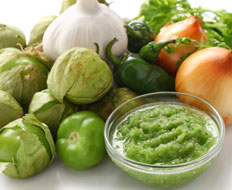If demography is indeed destiny (as so many pundits and prognosticators are fond of noting), then fast-food and fast-casual brands are bound to take on an even more pronounced Latin flavor in coming years.
Consider: The Latino population in the U.S. grew 43 percent between 2000 and 2010, and Hispanics are projected to constitute fully 20 percent of the U.S. population by 2020, according to the U.S. Census Bureau. And this is a young crowd; the median age of U.S. Latinos is estimated at 28 years, compared with the overall U.S. median of 37 years. This means that a vast number of Latino consumers throughout the U.S. are starting families and forming households, which are often larger than those of other Americans. It also means that many, many Latinos are just now entering their prime earning and spending years.
It bears repeating that Latinos are already a vitally important part of the quick-serve customer base. Recent estimates from NPD Group indicate that Hispanic consumers make up 17 percent of all quick-serve traffic, and that about 18 percent of all dollars spent in quick-serve establishments can be attributed to Hispanic customers. On average, these patrons visit fast-food and fast-casual restaurants 10 times per month, compared with an average of seven times per month among other demographics.
What this suggests for quick-serve operators is that it pays to have a menu strategy that takes into account the many and varied tastes of Latino consumers. Here are a few thoughts on how to best meet this challenge:
Cater both to the desire for authenticity …
The first and most obvious tack quick serves can take to attract more Latino consumers is to take classic Central and South American recipes and recreate them, taking care to source authentic ingredients from their origins.
What does this mean in practice? Well, if you’re going to serve, say, a traditional Mexican torta for lunch, it means it should be served not on an American-style bun or sub roll, but on a true Mexican bolillo—the crusty, oblong carriers that are, for many Mexicans, the sandwich’s defining ingredient. In a similar vein, if you’re considering adding arepas (stuffed Venezuelan corn patties) to your menu, don’t skimp on the real ground corn dough; sample many versions of the genuine article and strive to achieve something akin to what a native Venezuelan might experience at home.
… and to the acculturated consumer
It’s worth noting that while authentic offerings have their place, it’s not off strategy to develop dishes that aim more directly at the hybridized palates of acculturated Latino consumers—those with one foot planted in their Latino heritage and the other grounded in more traditional middle-American fare. This can be accomplished simply by, say, creating a grilled chimichurri sandwich that fuses the Argentinean sauce with a standard-issue slab of steak or chicken. The parsley-based sauce could even be doctored to include cilantro or basil to give it a more bi- or tricultural spin.
Play off traditional American favorites
Think mac ‘n’ cheese that uses Brazilian Minas cheese, Mexican queso blanco, or Venezuelan Guyanés rather than traditional cheddar. Think about the possibilities inherent in spiking pizza or pasta with Cecina de León, the Spanish-style cured and air-dried beef, rather than pepperoni or Italian sausage. Or try your hand at customizing burgers with any number of authentic Latino ingredients: salsas, tomatillo sauces, pico de gallo, serrano or habanero peppers, Oaxaca cheese … the options are virtually limitless.
Put a lid on it
I’ve talked before in this space about the potential for using interesting, distinctive Latin-American flavors to create novel soft drinks like tamarind or mango iced tea, guava or hibiscus lemonades, and agua frescas made with watermelon, tamarindo, or strawberry. Again, the care and creativity you bring to the table can go a long way toward winning over consumers who straddle the cultural divide between traditional Latin and traditional American foods and beverages.
One thought to bear in mind as you consider the options for making greater inroads with Latino guests: Everything we see, hear, and read about American quick-serve customers—particularly those who fall into the Millennial cohort—suggests that “flavor adventure” is one of the main drivers of food, drink, and restaurant choices these days. Everyone, it seems, is interested in having his or her palate piqued. So the menu items quick serves devise to appeal to the Latino market, if carefully conceived and smartly executed, stand to appeal to consumers across the spectrum. In other words, though the upfront creative challenges, financial investment, or ingredient-procurement process might be somewhat daunting, the potential payoff could be substantial.












